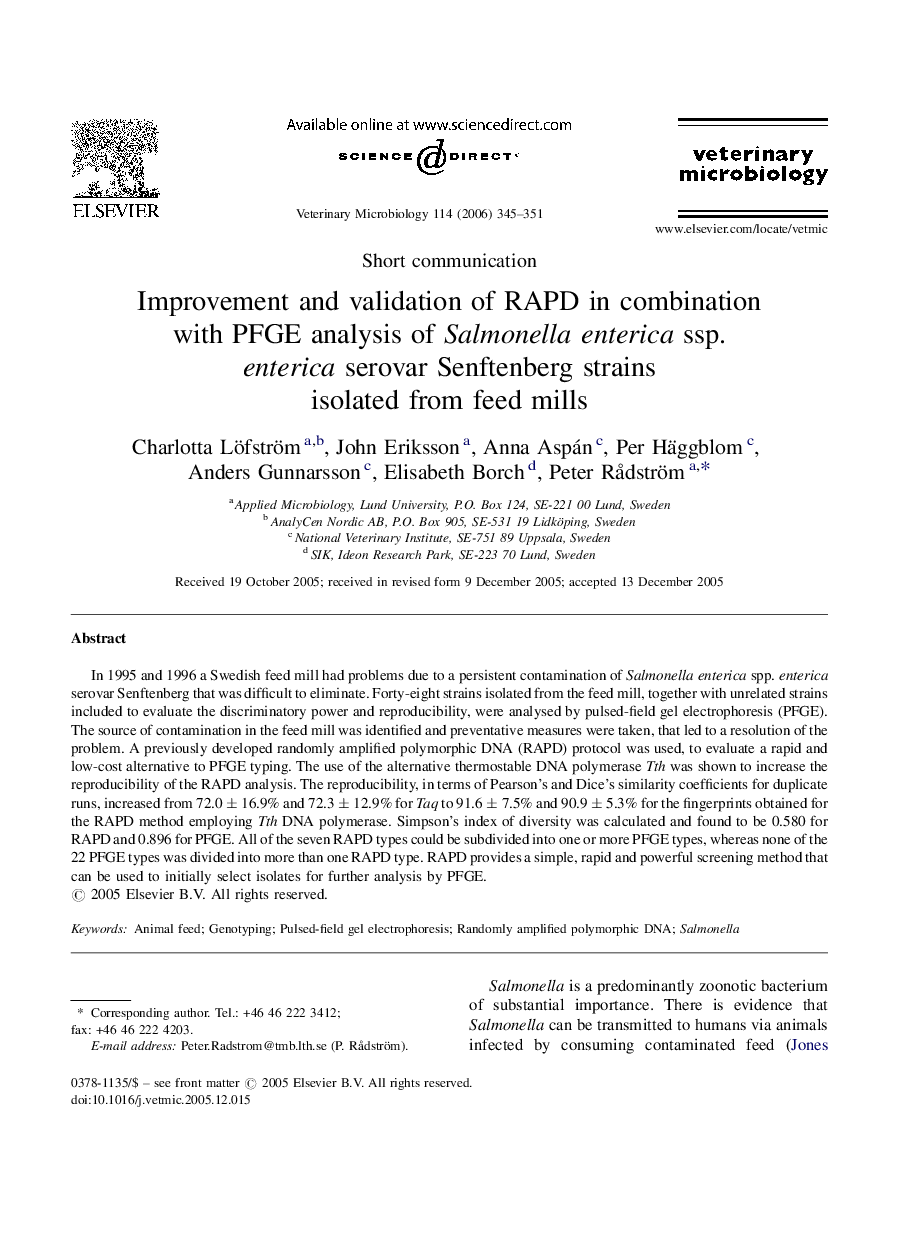| Article ID | Journal | Published Year | Pages | File Type |
|---|---|---|---|---|
| 2469575 | Veterinary Microbiology | 2006 | 7 Pages |
In 1995 and 1996 a Swedish feed mill had problems due to a persistent contamination of Salmonella enterica spp. enterica serovar Senftenberg that was difficult to eliminate. Forty-eight strains isolated from the feed mill, together with unrelated strains included to evaluate the discriminatory power and reproducibility, were analysed by pulsed-field gel electrophoresis (PFGE). The source of contamination in the feed mill was identified and preventative measures were taken, that led to a resolution of the problem. A previously developed randomly amplified polymorphic DNA (RAPD) protocol was used, to evaluate a rapid and low-cost alternative to PFGE typing. The use of the alternative thermostable DNA polymerase Tth was shown to increase the reproducibility of the RAPD analysis. The reproducibility, in terms of Pearson's and Dice's similarity coefficients for duplicate runs, increased from 72.0 ± 16.9% and 72.3 ± 12.9% for Taq to 91.6 ± 7.5% and 90.9 ± 5.3% for the fingerprints obtained for the RAPD method employing Tth DNA polymerase. Simpson's index of diversity was calculated and found to be 0.580 for RAPD and 0.896 for PFGE. All of the seven RAPD types could be subdivided into one or more PFGE types, whereas none of the 22 PFGE types was divided into more than one RAPD type. RAPD provides a simple, rapid and powerful screening method that can be used to initially select isolates for further analysis by PFGE.
